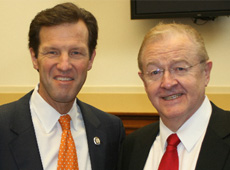We know what happened on Bloody Sunday but not why
Posted By: January 29, 2022
https://www.irishnews.com/opinion/columnists/2022/01/29/news/patrick-murphy-we-know-what-happened-on-bloody-sunday-but-not-why-2572289/
Patrick Murphy. Irish News. Belfast. Saturday, January 29, 2022.
Why did it happen? That’s the question that few have asked (and fewer have answered) in the fifty years since Bloody Sunday.
The facts are clear about events in what the poet, Thomas Kinsella, called “that brutal place/Of rage and terror and disgrace”, but there has been no explanation, even in the extensive Saville report.
In the hours following the massacre, the Northern Ireland Civil Rights Association’s (NICRA) decided to document what happened, a commendably level-headed determination at such a traumatic time. Saville says the decision was taken that evening in Brigid Bond’s house. Those present included Kevin McCorry, Madge Davison, and Ann Hope.
In the following days, I helped to produce the first account of events in NICRA’s Massacre at Derry. It used eyewitness accounts, which were audio recorded by Kathy Keville, an American researcher who, if I remember rightly, was related to film director John Ford. (Saville refers to her as “Kathleen”, but we never called her that.)
Having collated the witness statements, we were still unsure of an explanation. Our debate continued, even as I was finalizing the front and back covers of our booklet for the printers, by trimming the photographs of the victims with scissors and pasting them with glue.
We had two theories. One suggested a breakdown in army discipline. I argued instead that it was a deliberately planned massacre because the Paras would not disobey orders.
The weakness in my argument was that Britain would not risk worldwide condemnation by deliberately killing civilians (although they had already done so in Ballymurphy).
We agreed that Britain wanted the civil rights movement off the streets. So the killings were state-sponsored terrorism. We wrote in our introduction that the massacre was directed by the British government, even though we did not know why.
It did not take us long to find out.
Facing criticism over the denial of civil rights in its embassies across the world, Britain realized that it would be easier to confront those who wished to destroy, rather than reform, the state. So they set about changing the agenda from civil rights to civil war.
Unionism had tried to do the same when the RUC attacked civil rights marchers. Stormont could not handle opposition which was not an IRA campaign. Non-violence frustrated unionists, but where they failed in 1968, Britain succeeded in 1972.
The Provisional IRA (which opposed the civil rights campaign) accepted Britain’s invitation to all-out warfare, even though it would mean a sectarian bloodbath. (When you agree to your enemy’s agenda, you have already lost the war.)
NICRA had to withdraw from the streets for its supporters’ safety, leaving the Provisional IRA center stage. The peaceful protest became another victim to be buried in the bog of sectarianism.
In July the IRA broke the civil rights pledge of no talks until internment ends by negotiating with the British. When the talks collapsed, the Provisionals exploded 22 bombs in 80 minutes at civilian targets across Belfast, killing nine people. Bloody Sunday had been matched by Bloody Friday and was repeated every bloody day for 25 years.
The Belfast bombs swung international opinion in Britain’s favor and ten days later 30,000 troops invaded the no-go areas of Derry and Belfast. On civil rights, Britain was off the hook. We never got a bill of rights, but now we knew the explanation for Bloody Sunday.
The photographs which I cut and pasted 50 years ago are still used in print and online. They stand as a stark reminder of the human loss and suffering on that terrible day.
Thirty-eight years after Bloody Sunday, Saville confirmed what we knew within hours. However, he offered no explanation for what happened and no one has ever asked for one.
Instead, Britain, the paramilitaries, and our politicians have all selectively cut and pasted history since then to fit their own stories – leaving the absence of an explanatory truth another of the many tragedies which Bloody Sunday represents.










